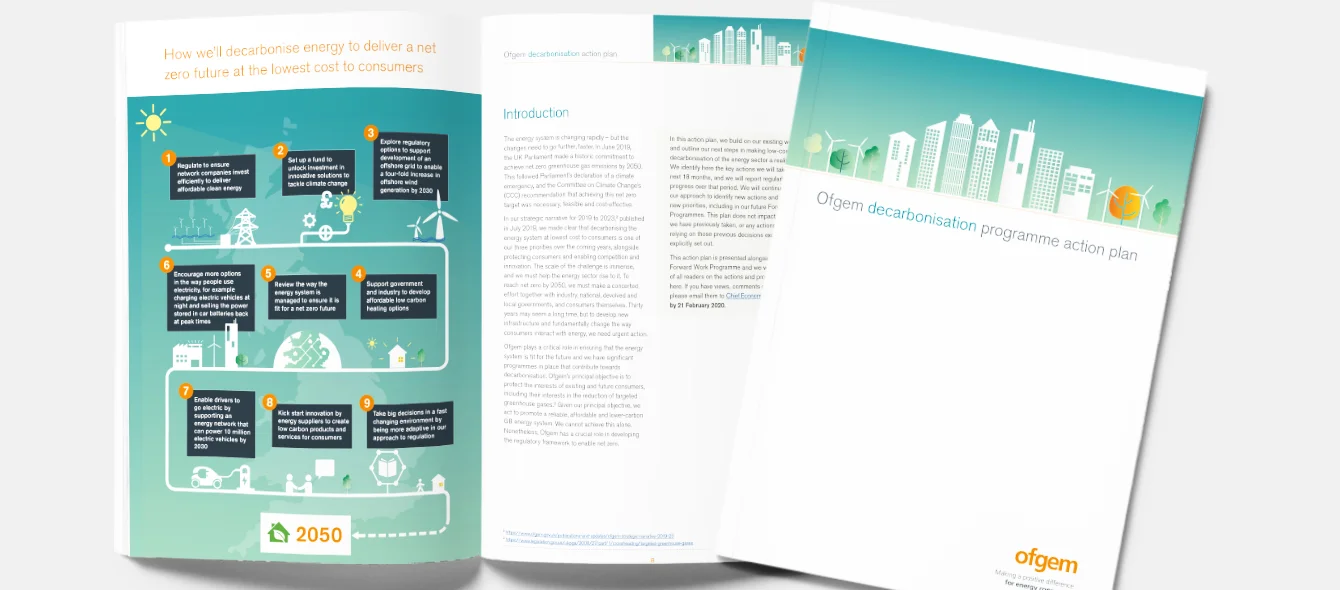UK regulator Ofgem unveiled February 3 a decarbonization action plan to deliver on the UK’s ambitious goal of being a net zero carbon emitter by 2050.
The regulator highlights that while almost half of the UK’s electricity came from low carbon sources last year, and that power sector emissions are down by almost two-thirds since 1990, less than 5% of the energy used to heat UK homes is low carbon.
Moreover, the transport sector remains overwhelmingly dependent on fossil fuels.
To meet the net zero carbon by 2050 target, Ofgem says the number of electric vehicles (EVs) on British roads needs to grow from 230,000 today to 46 million by 2050. In addition, 90% of homes and 100% of non-residential buildings will need to be heated by low carbon sources by that time.
Lowest cost pathway
Although there are different ways to decarbonise heat, increased low carbon electricity use in heat supply is certain. In combination with the rise in electricity demand from EVs, this means huge growth in renewable electricity generation will be needed.
Ofgem says early action now will make the transition process cheaper in the long run.
In particular, it notes: “The dramatic reduction in offshore wind costs demonstrates that in the long term, low carbon energy can be cheaper than traditional fossil fuels.”
Ofgem calls for “anticipatory investment“ on the behalf of utilities, arguing that while this may incur short-term costs, it is necessary to avoid much higher costs later on.
“One interconnected whole”
From the giant offshore wind turbines being erected off Britain’s coasts down to the batteries in EVs and the home energy systems of ordinary consumers, the UK energy system must be treated as “one interconnected whole”, says Ofgem.
This will deliver system flexibility at the lowest cost.
Investing in smart charging and vehicle-to-grid technology, for example, will create flexible demand, allowing EV owners to charge at off-peak times when electricity prices are low. EVs will be able to push electricity back into the grid when required. This will reduce both the overall amount of generation capacity required and new investment in the grid itself thereby protecting consumer bills, Ofgem says.
The National Grid’s Future Energy Scenarios estimate that without smart charging and vehicle-to-grid technology, EVs could add 24 GW to peak demand by 2050.
Huge push for renewables
Reducing power sector emissions further, while meeting growing electricity demand from heat and transport will require a huge push forward for renewables.
Ofgem said: “The UK has made great progress in developing offshore wind, but capacity will have to increase enormously to achieve net zero.”
Based on the conclusions of the UK’s Committee on Climate Change, Ofgem says low-carbon electricity generation needs to quadruple by 2050.
Net zero by 2050 means renewables will need to meet half of all electricity generation by that time, with the other half coming from other low carbon energy sources such as nuclear and decarbonised gas.
The UK government has set an ambitious target of reached 40 GW of offshore wind by 2030.
Critical infrastructure
Ofgem‘s plan, covering the next 18 months, sees nine key areas of action, which include two major infrastructural ambitions critical for the expansion of offshore wind and the creation of an interconnected UK energy system:
- exploring options to support the development of an offshore grid to enable a four-fold increase in offshore wind by 2030; and
- supporting an energy network that can power 10 million EVs by 2030.
Without this infrastructure, it will be hard to meet government targets and create an interconnected low-carbon energy system at the lowest cost to consumers, Ofgem concludes.
Photo credits: © Ofgem
